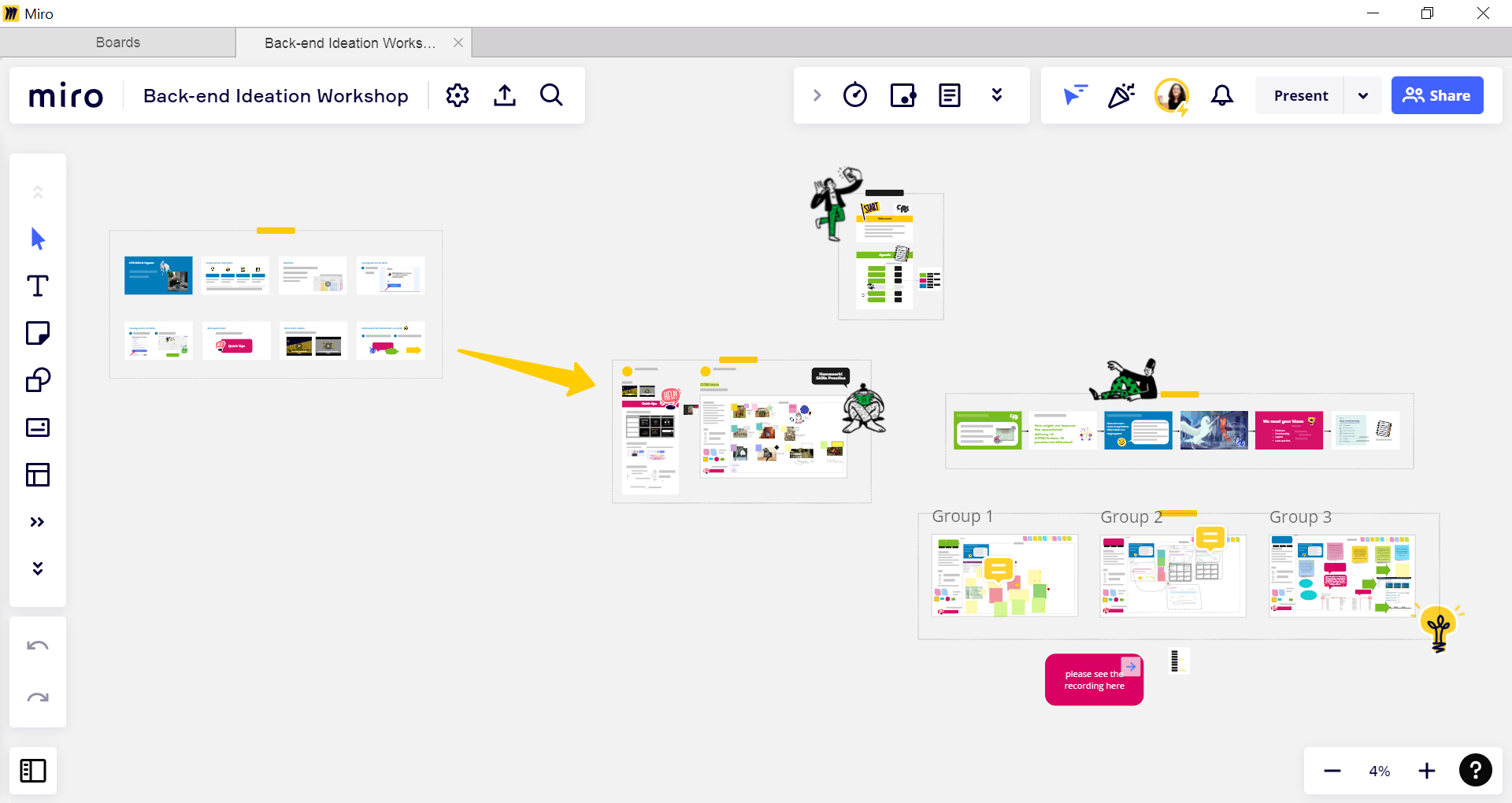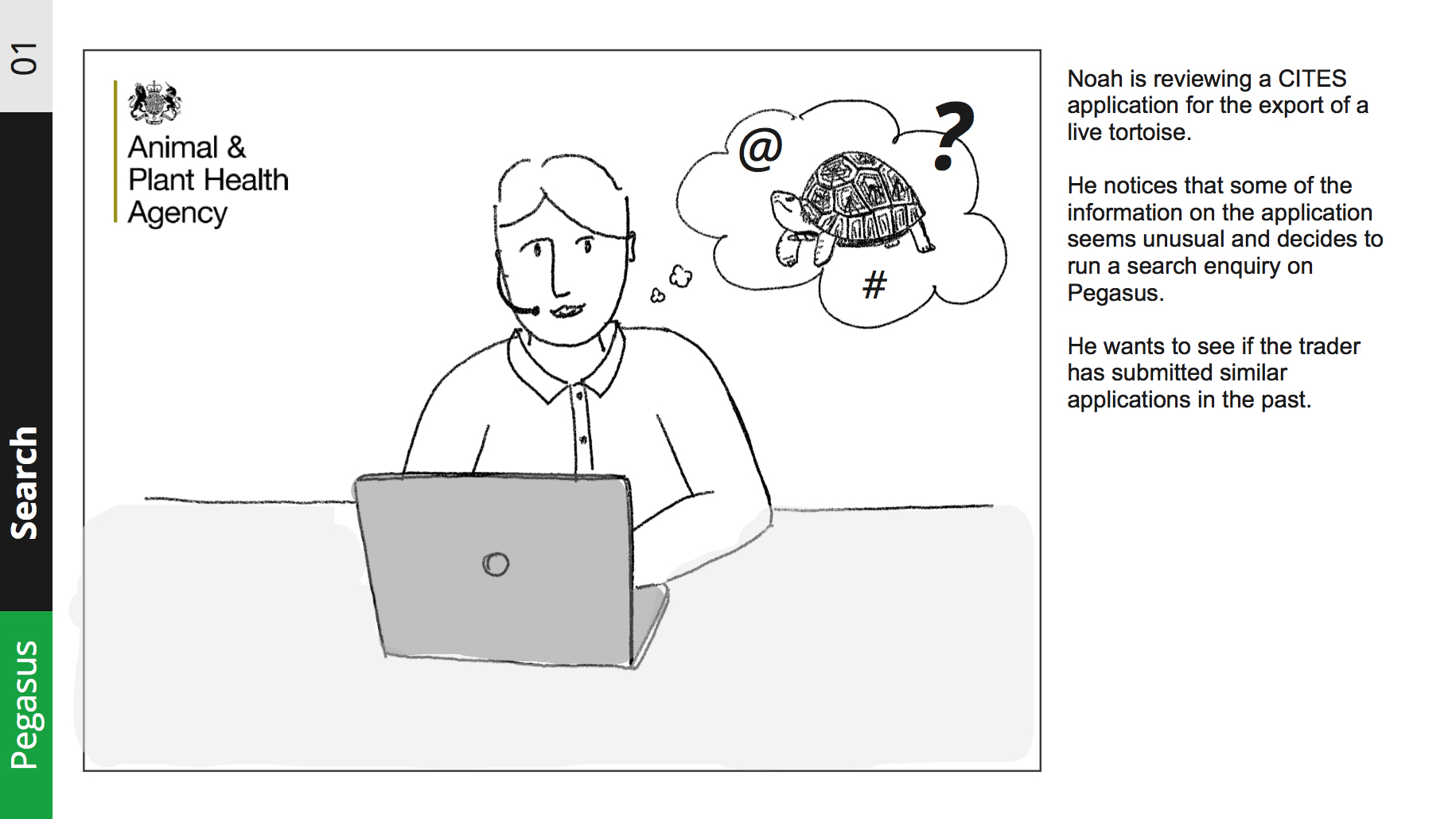The challenge.
Digitising the operational delivery of CITES permits in the United Kingdom (trade of endangered animal and plant species).
The project consisted of digitising the front-end applications using GOV.UK’s design system, plus developing a bespoke case-management system with Microsoft Dynamics’ Software-as-a-Service solution.

The approach.
Leading end-to-end digital service transformation.
The team had the ambitious target of digitising both: the application process and the operational delivery of the processing team. Both were pre-digital, involving numerous manual workarounds that would render the service convoluted and inefficient.
The approach involved building an agile team of user-centred design (UCD) practices and digital product development to design and build a modern and intuitive CITES service.
In my role, I was responsible for the end-to-end service design in all channels: from customer awareness to case management and permit delivery. On the one hand, I led a UCD team (UX Designer, Content Designer, and User Researcher) to deliver, test and iterate the customer experience part of the project. On the other hand, I also worked closely with the Microsoft Power Platform Functional Consultant, Developers and QA Testers to build and maintain the backlog of development work for the case management system. As the lead designer, I sat on all “Three Amigos” sessions with the developers and testers to ensure we were building technically feasible solutions that resulted in delightful experiences.
Understanding user needs and early prototyping.
In my role as a UCD lead, I worked closely with other design professionals in the team (UX, content, research) to scope and deliver the customer web-based service for submitting applications to trade on endangered species, using the GOV.UK platform, design system and components. I mapped the as-is user journey end-to-end: from customer awareness, going through application assessment, to finishing with customers receiving their permits. That mapping helped the project team identify pain points in the journey and understand areas for future improvement. After mapping the as-is processes, I conducted ideation sessions with internal staff and delivery partners to understand what good looks like and explore what type of functionality they would like to see in the finished case-management software. The ideation sessions were a great opportunity to get closer to the back-end users of the case management system. I made a connection with the team in a professional but playful way through a relaxed workshop delivered on Miro. Most participants have never used the tool, so I delivered some simple training and desk instructions for them, as well as created an ice-breaker that helped them loosen up and worry about communicating their ideas, not about how to use the tool.
Using the outcomes of the ideation sessions, and the opportunities for improvement previously identified, I helped the team define our minimum viable product (MVP) and its performance framework.

Due to my close involvement with setting up the business requirements for the development of the case-management software, I was also responsible for conducting the user research for the MS Power Platform solution, from the Alpha phase until the Public Beta phase. I conducted several sessions with Subject Matter Experts (SMEs) of moderated usability testing. I started by using scenarios and low-fidelity prototypes, to finish by conducting user acceptance testing with the production software.
I like drawing and communicating complex ideas in simple sketches. I used those skills to put into simple mockups what back-end users wanted from the tool to feed it back to them and get their feedback.


In the Beta phase of the product, and leveraging the relationship built with the SMEs, I was responsible for creating the desktop instructions and training plan for the operational team. I designed and delivered extensive sessions on back-end user training, tailored to their department and responsibilities. I acted also as the first-line-of-support person when users encountered issues during the first few weeks of the software going live.
Building the software development backlog.
Another thing worth mentioning is that as the team lacked a full-time Business Analyst, I built the entire product development backlog in collaboration with the Functional Consultant. This was a new and exciting task for me as it was an opportunity to closely collaborate with Developers, QA Testers and the Solution Architect in the team. Wearing my “business analyst” hat, if any team member had questions or suggestions regarding a user story definition or scope, we would collaborate to make those changes and refine the product requirements.
The results.
- The full digitisation of the end-to-end process for applying and issuing permits for trade on endangered species in the UK, delivered on budget and on time.
- A massive increase in efficiency and effectiveness helped reduce service level agreement times (SLAs) by 50%.
- A rocket increase in digital take-up helped the organisation save public funds by moving away from paper-based applications and assessments.


